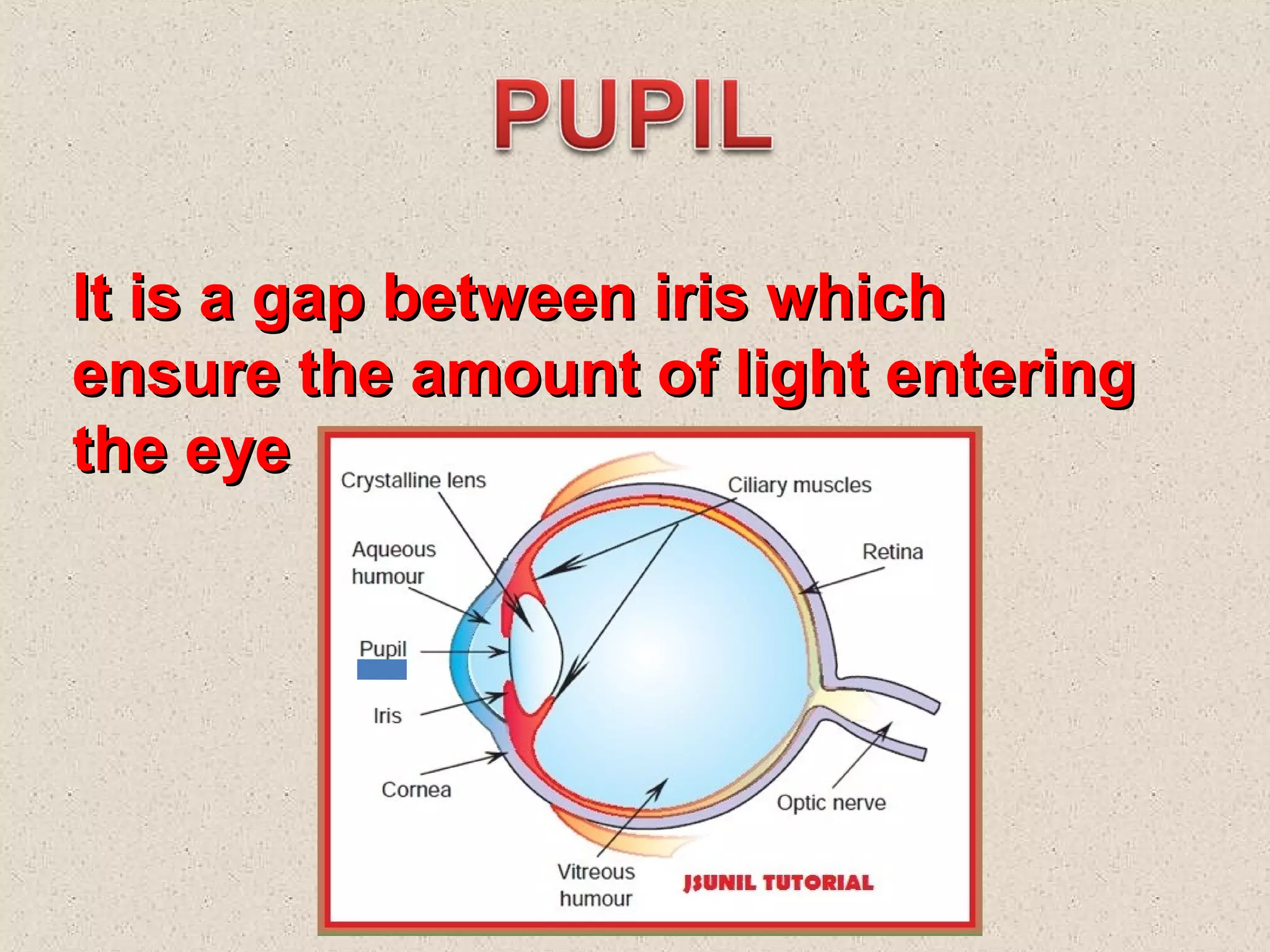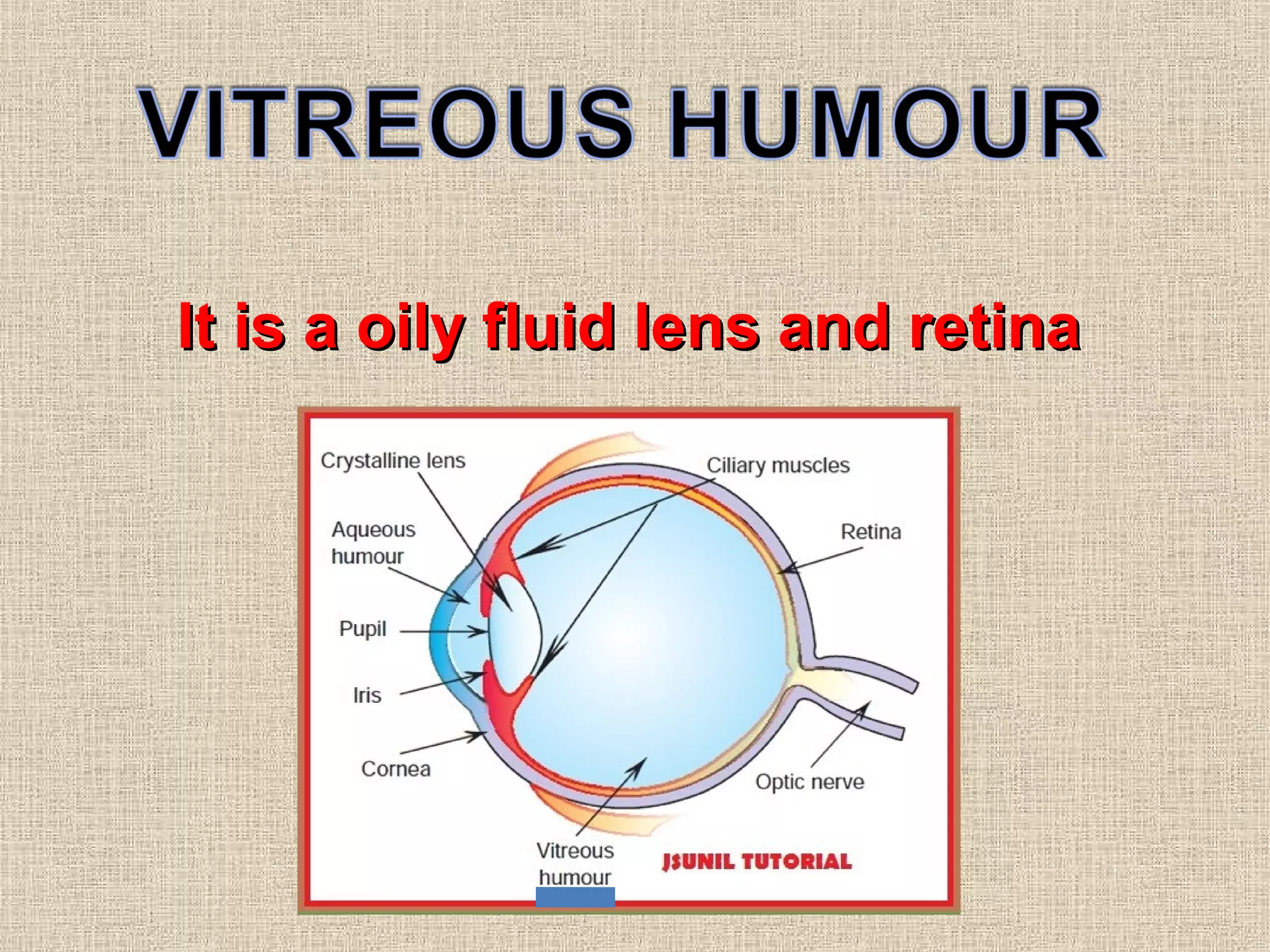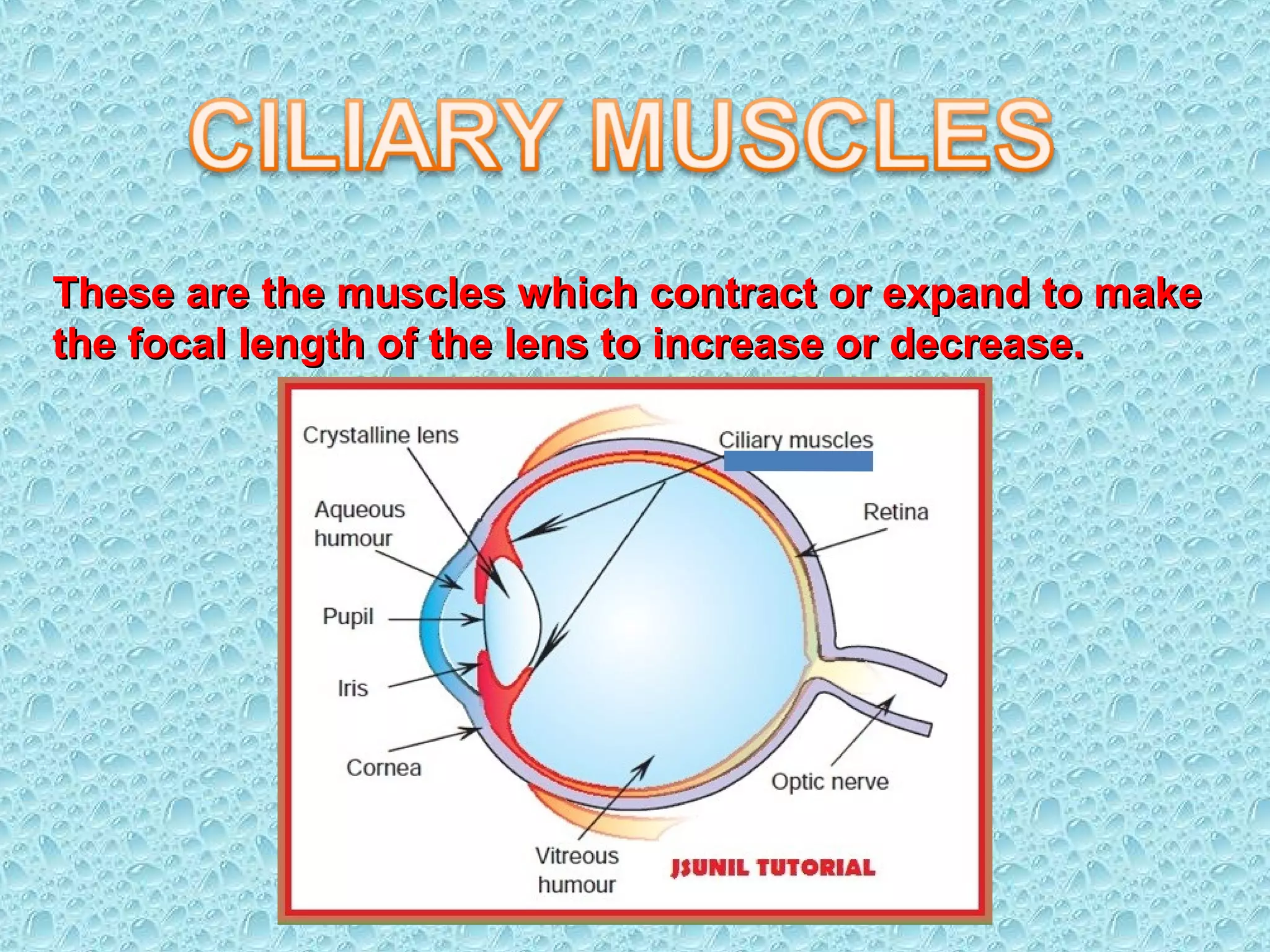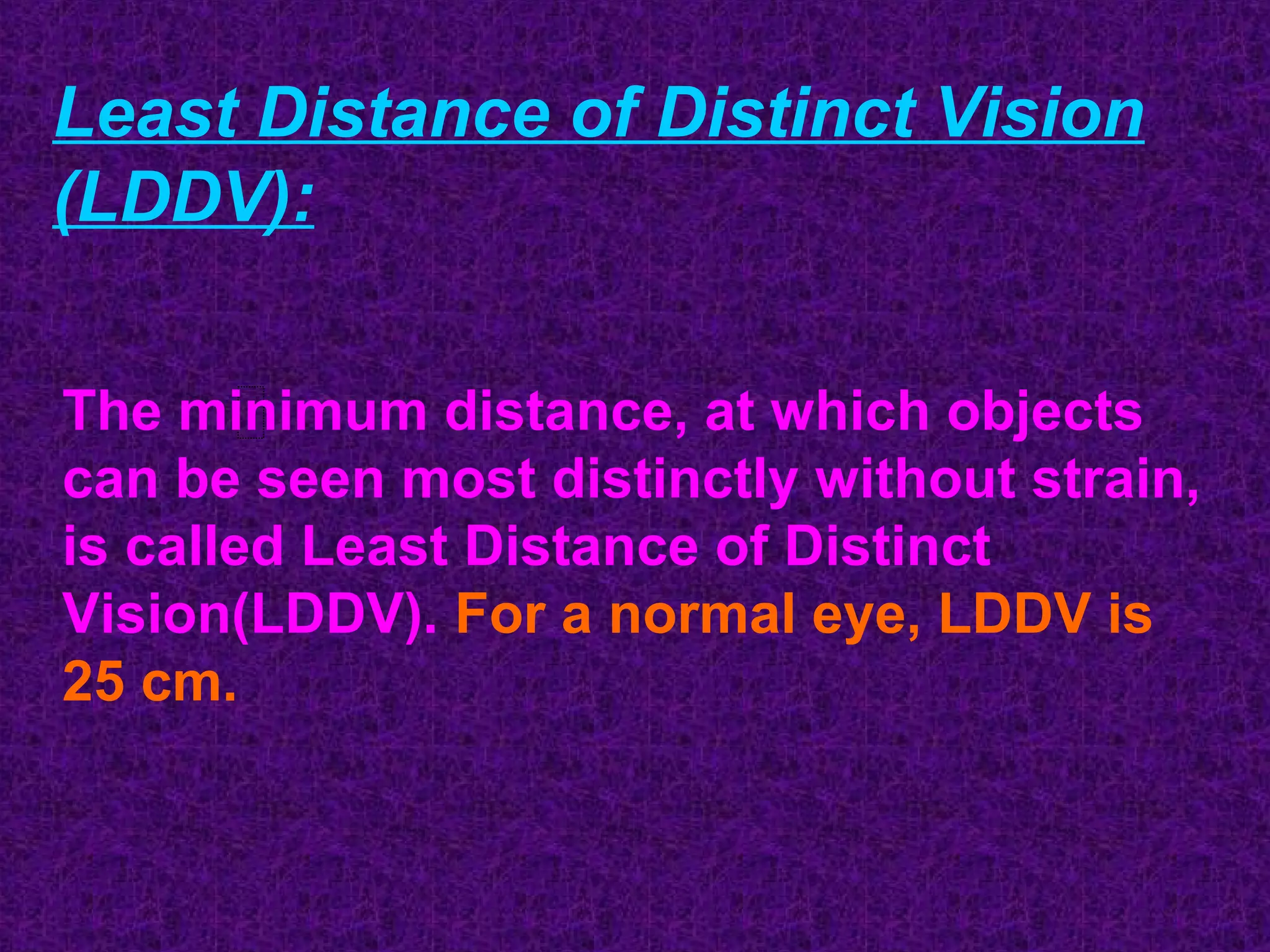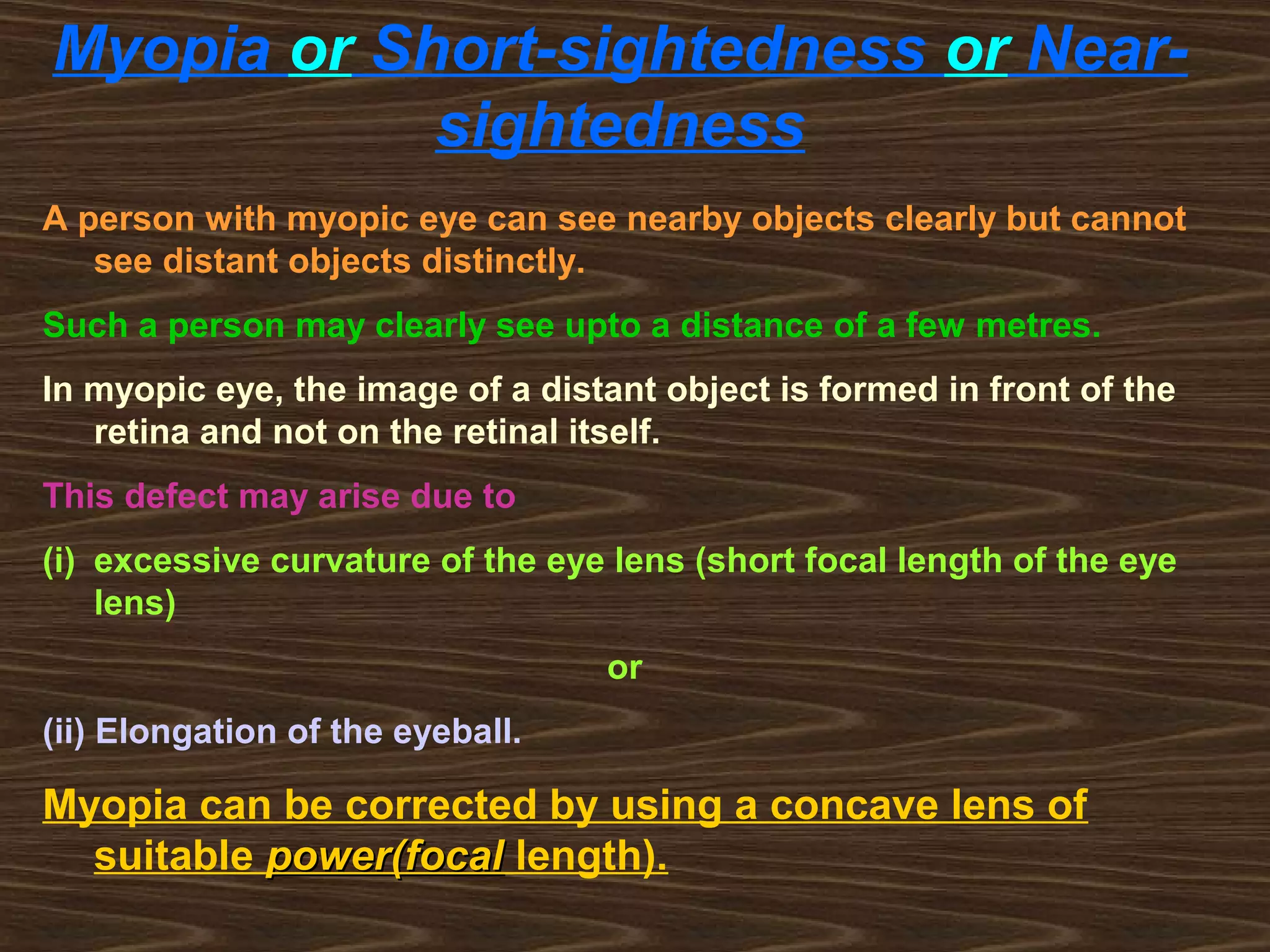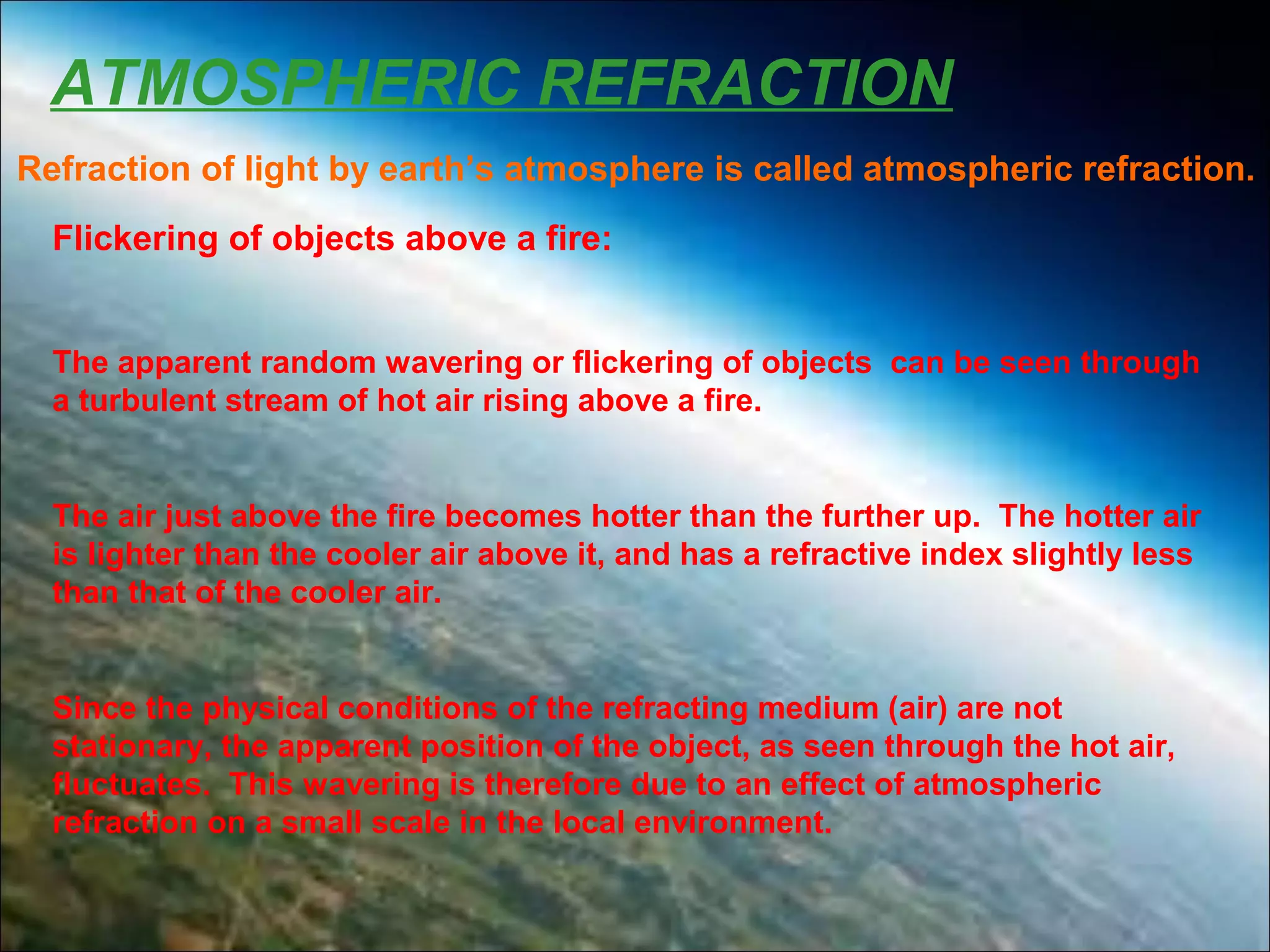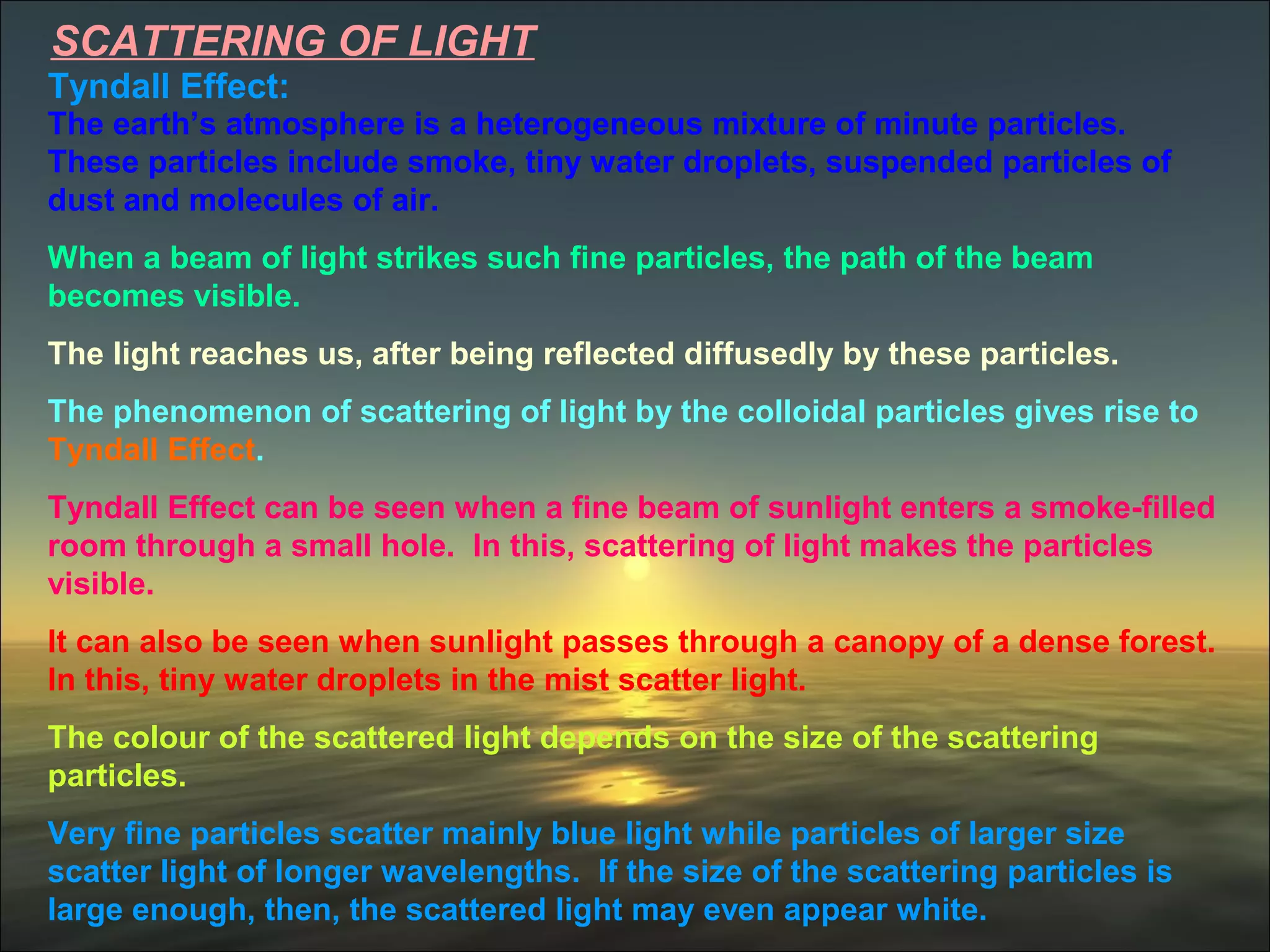The document discusses various topics related to light and vision including:
1. The structure and parts of the human eye including the cornea, iris, pupil, lens, retina, and more.
2. Vision defects like myopia, hypermetropia, and presbyopia and their corrections using lenses.
3. Refraction of light through prisms and lenses, dispersion, and rainbow formation.
4. Atmospheric effects like refraction causing mirages, twinkling of stars, and scattering of light making the sky appear blue.






